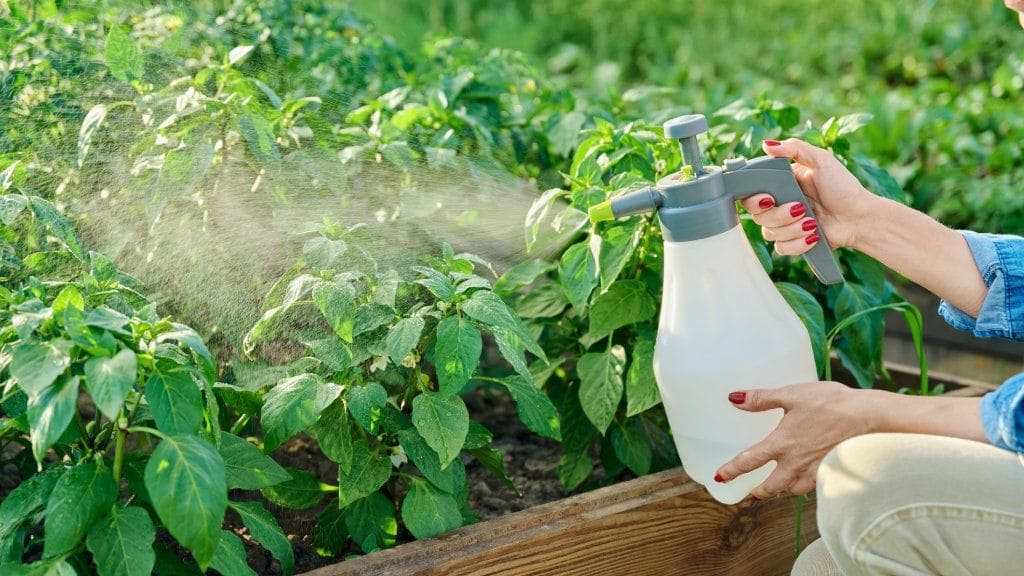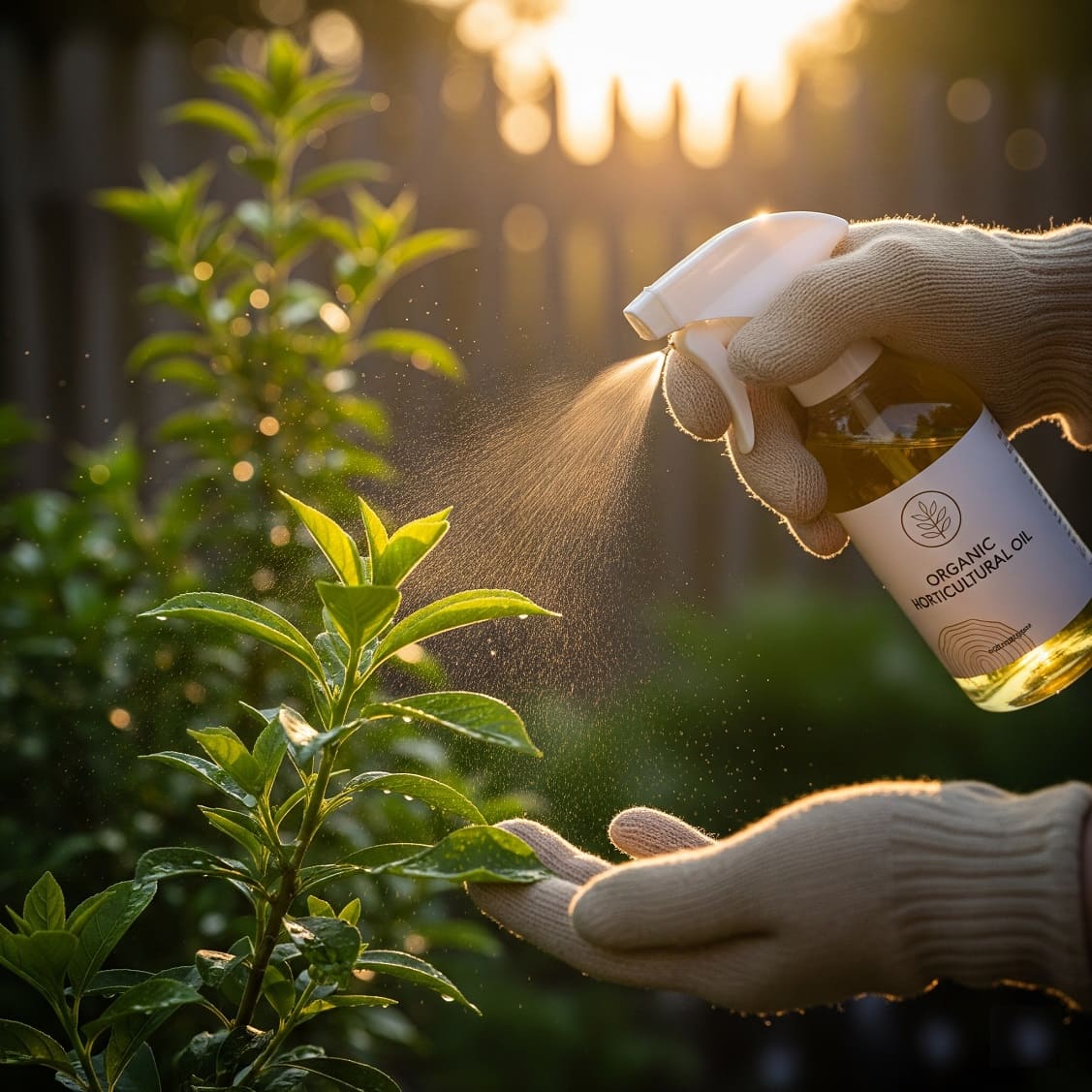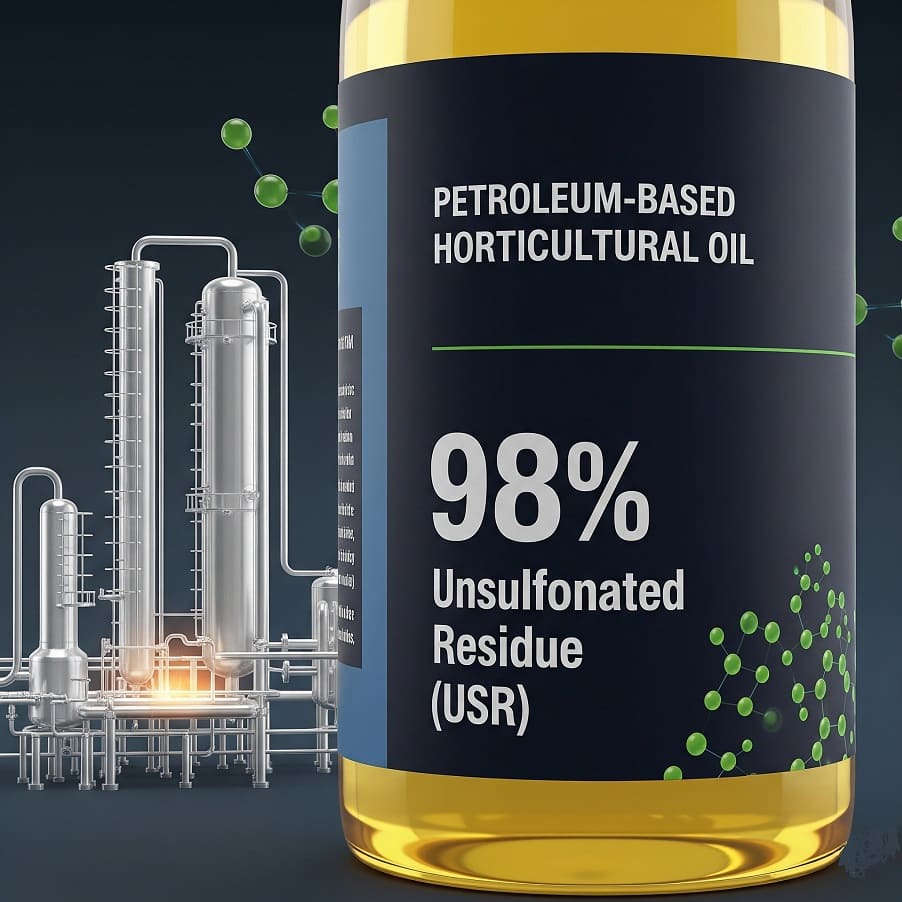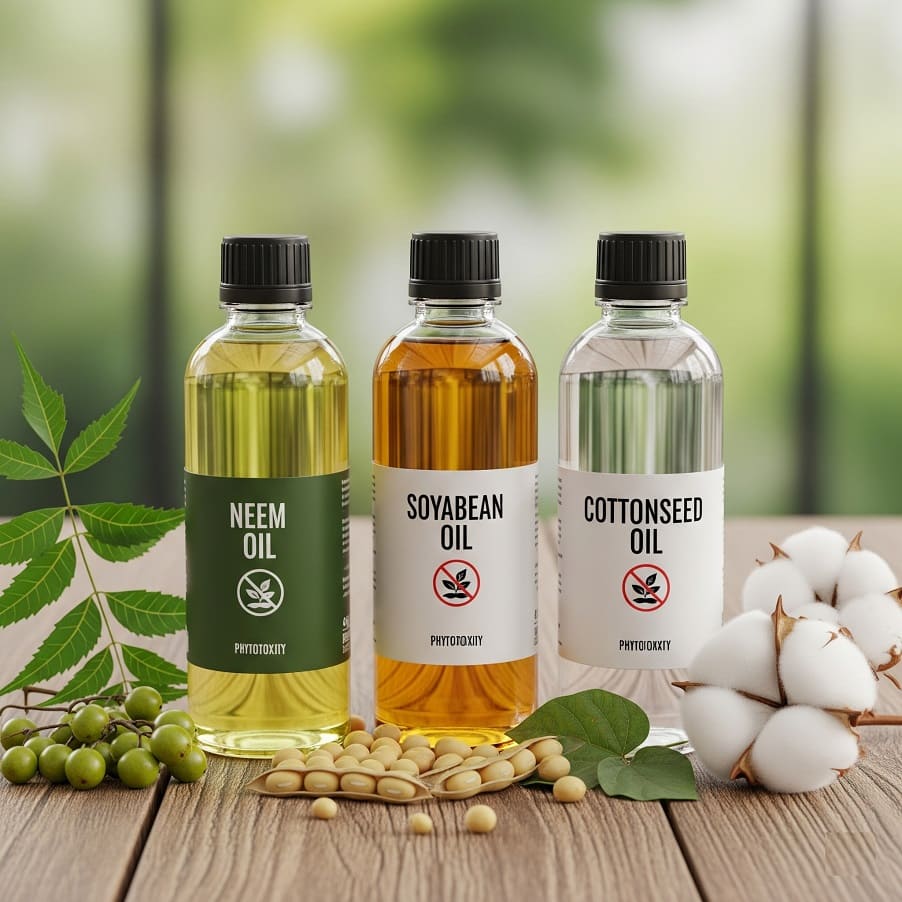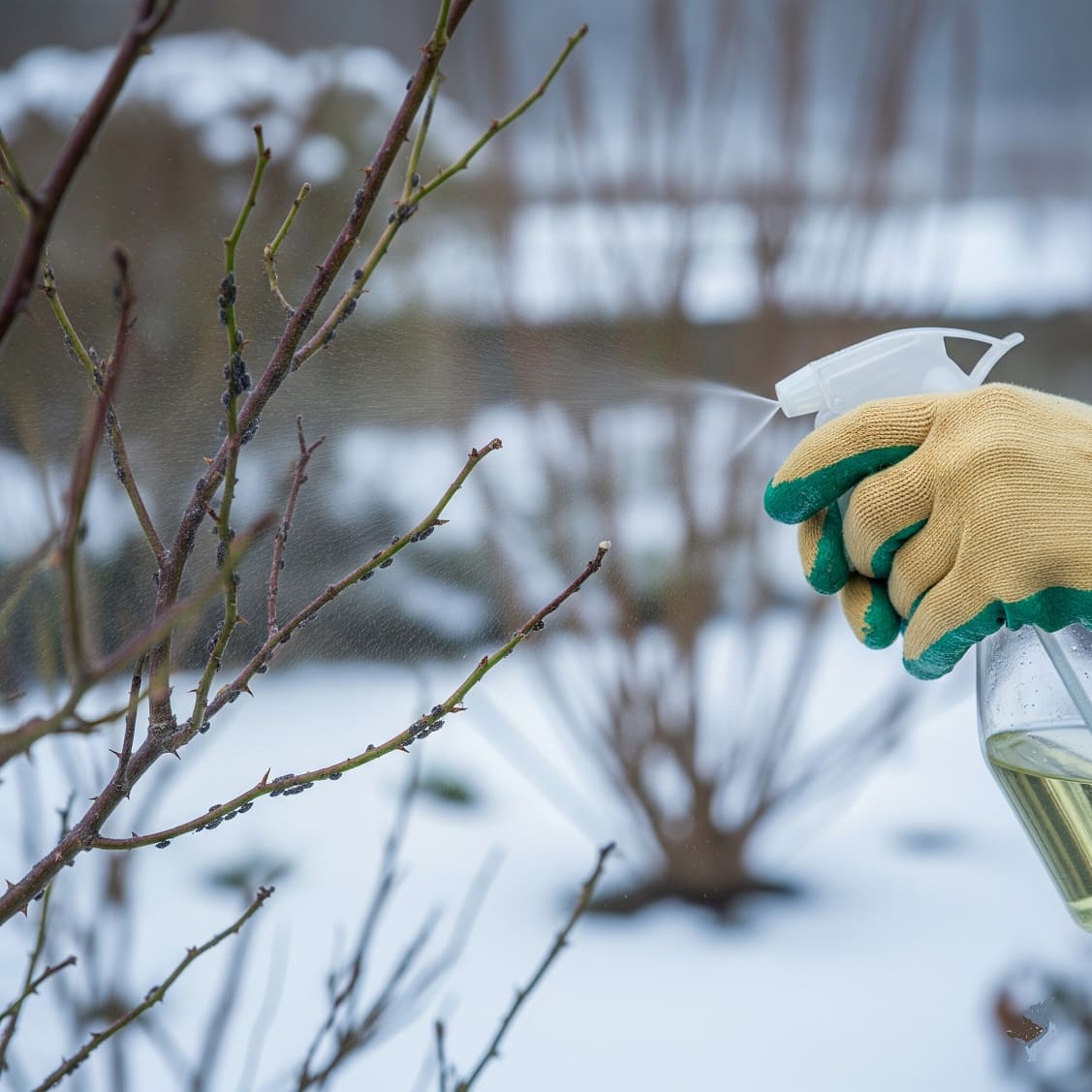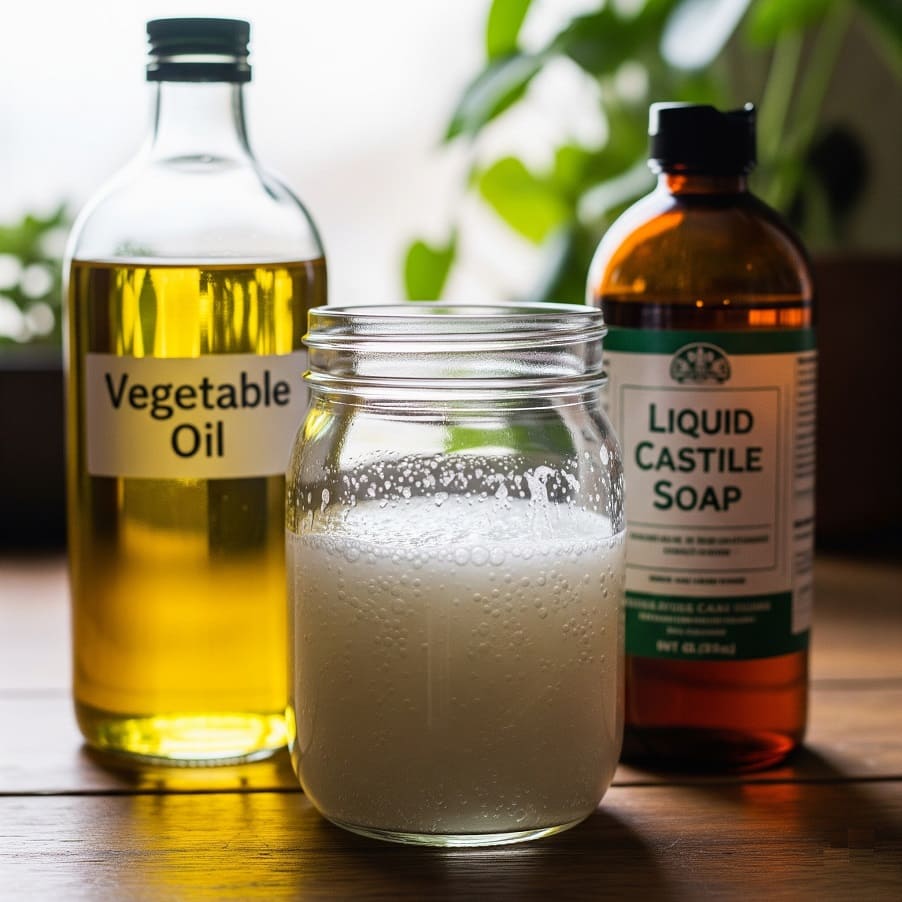Picture this: you’re admiring your prized roses on a perfect spring morning when you notice something that makes your heart sink. Tiny green aphids are clustering on the tender new growth, and scale insects have formed crusty brown bumps along the stems.
Your first instinct might be to reach for the strongest chemical pesticide you can find, but what if I told you there’s a gentler, more sustainable solution that’s been protecting plants for over a century?
Enter horticultural oil—a time-tested, environmentally friendly pest control method that works by literally suffocating unwanted insects while leaving beneficial pollinators largely unharmed.
By the end of this guide, you’ll understand exactly how to harness this powerful tool to keep your garden healthy and thriving, whether you’re dealing with a current infestation or want to prevent future problems.
What Exactly Is Horticultural Oil?
Horticultural oil isn’t just one product—it’s a category of refined oils specifically formulated for plant care.
Think of it as the Swiss Army knife of organic pest control. These oils can be derived from petroleum (highly refined mineral oils) or plants (like neem, soybean, or cottonseed oil), and they’re mixed with emulsifiers that allow them to blend seamlessly with water for easy spraying.
The magic happens when these oils coat insects and their eggs, creating an impermeable barrier that blocks their breathing pores, called spiracles. It’s essentially a gentle suffocation method that works without introducing harsh chemicals into your garden ecosystem.
Modern horticultural oils are incredibly pure—typically 92 to 99 percent refined—with harmful compounds like sulfur, aromatic hydrocarbons, and other plant-damaging impurities removed through sophisticated distillation and filtration processes.
This level of refinement is what makes today’s products safe for use on growing plants, unlike the crude oils of the past.
A Brief Journey Through History
The story of horticultural oil begins in ancient Rome, where farmers mixed oil and ash for pest control as early as 350 B.C. By the 1880s, American fruit growers had developed the first commercial “dormant oils” specifically for winter application on fruit trees.
These early formulations were heavy and could only be used on leafless, dormant plants—apply them to growing foliage and you’d burn your plants to a crisp.
Fast-forward to today, and refinement technology has given us incredibly pure, lightweight oils that can be safely applied throughout the growing season. What once was a crude winter-only treatment has evolved into a versatile, year-round pest management tool.
Understanding Oil Types and Formulations
Success with horticultural oils starts with understanding the different formulations and their specific applications. The terminology can be confusing because many names refer to timing rather than actual oil properties.
Petroleum-Based vs. Plant-Based Oils
Petroleum-based horticultural oils are derived from paraffinic crude oil and refined to remove plant-damaging compounds. They’re measured by their “unsulfonated residue” (USR) percentage—the higher the number, the safer for plants. Quality oils should have at least 92% USR, with superior oils reaching 96% or higher.
Plant-based oils come from various sources including neem, soybean, cottonseed, and sesame. While generally considered more environmentally friendly, they’re typically less refined than petroleum oils and may have higher phytotoxicity risks if not used carefully.
Dormant Oils: The Winter Warriors
Dormant oils are your heavy-duty option for winter pest control. Applied when plants are leafless and dormant, these formulations work at higher concentrations (2-4%) to eliminate overwintering pests like scale insects, aphid eggs, and spider mites that hunker down in bark crevices during cold months.
The key advantage of dormant applications is timing—you’re hitting pests when they’re most vulnerable and before beneficial insects become active. One well-timed dormant oil application can prevent pest problems throughout the entire growing season.
Summer and All-Season Oils: Growing Season Protection
Summer oils are lighter, more refined formulations designed for use when plants are actively growing. These “superior” oils can be applied at lower concentrations (1-2%) without damaging foliage, making them perfect for addressing active infestations during peak growing periods.
Modern all-season oils represent the pinnacle of refinement technology. These versatile products can be used year-round by adjusting the concentration—higher rates for dormant applications, lower rates for growing season use. Many experienced gardeners prefer these for their simplicity and flexibility.
The Science Behind the Suffocation
Horticultural oils work through multiple mechanisms that make them remarkably effective against a wide range of pests. Their primary mode of action is beautifully simple: they create a thin film over insects that blocks their breathing pores.
Unlike mammals, insects breathe through small openings called spiracles located along their bodies. When oil covers these openings, oxygen can’t reach their internal respiratory system, leading to death by asphyxiation.
But the benefits extend far beyond simple suffocation. These oils also disrupt insect feeding by making leaf surfaces unpalatable, interfere with reproduction by coating eggs and preventing proper gas exchange, and block fungal spore germination by creating a protective barrier on plant surfaces.
Additionally, by controlling aphids and other vector insects, they help prevent virus transmission between plants.
The effectiveness against fungal diseases occurs through multiple pathways—the oils physically trap spores, prevent them from adhering to plant surfaces, and may even boost plant resistance by altering host physiology in beneficial ways.
Your Pest-Fighting Arsenal: What Horticultural Oil Controls
Horticultural oils excel against soft-bodied, slow-moving pests that spend significant time on plant surfaces. Understanding which pests respond best helps you time applications for maximum effectiveness.
Highly susceptible targets include aphids of all species, scale insects (both soft and armored types), spider mites and other pest mites, whiteflies, mealybugs, thrips, and adelgids. These pests are particularly vulnerable because they either lack protective coverings or remain stationary for extended periods.
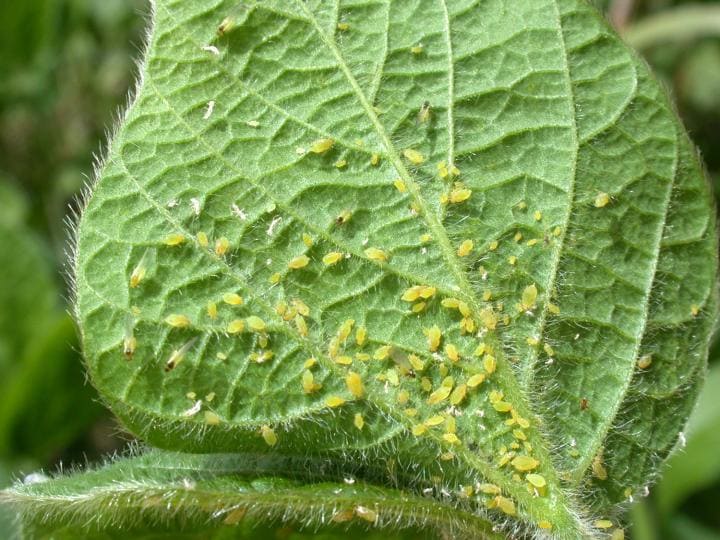
Moderately susceptible pests include young caterpillars, leafhoppers, plant bugs in their immature stages, and psyllids. Success against these targets often depends on hitting them during vulnerable life stages and achieving complete coverage.
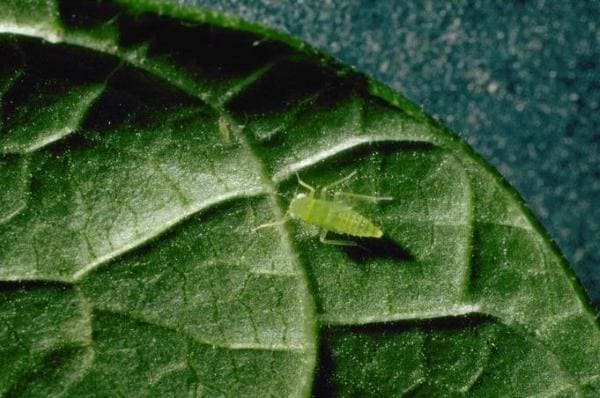
👉 Here are 50+ Common Christmas Tree Bugs: How to Identify, Prevent, and Get Rid of Them
For disease prevention, horticultural oils show excellent results against powdery mildew, moderate effectiveness against rust and leaf spot diseases, and good suppression of sooty mold. The key is applying oils before disease symptoms appear or during very early infection stages.
During my third year of serious gardening, I learned the power of preventive applications the hard way. My roses were plagued by powdery mildew every summer until I started applying horticultural oil in early spring before symptoms appeared.
The preventive approach reduced my mildew problems by roughly 80% and eliminated the need for synthetic fungicides.
Mastering Application: Timing, Technique, and Safety
Success with horticultural oils depends heavily on proper timing, application technique, and safety precautions. Getting these fundamentals right means the difference between excellent pest control and potential plant damage.
Perfect Timing for Dormant Applications
Apply dormant oils during late winter or early spring when temperatures will remain above 40°F for at least 24 hours after application, no freezing weather is expected within 48 hours, and buds are still closed or showing just a hint of green tissue.
Wait until plants have experienced sufficient cold exposure to ensure true dormancy—this typically means several consecutive days with temperatures in the low twenties or teens.
The delayed dormant timing, when buds show 1/16 to 1/2 inch of green tissue, can actually be more effective than earlier applications because insects are becoming active and breathing more rapidly, making them more susceptible to suffocation.
Summer Application Windows
For growing season treatments, timing becomes even more critical. Apply during early morning or late evening when temperatures are cooler, ensuring daytime temperatures won’t exceed 85°F and humidity levels stay below 90%. Choose calm days to prevent drift onto sensitive plants, and never apply when rain is expected within 24 hours.
Remember that leaf surface temperature can differ significantly from air temperature. Use a thermometer directly on leaf surfaces during hot weather to ensure you’re within safe application ranges.
Application Technique and Equipment
Proper application requires complete coverage of all plant surfaces. This means coating both upper and lower leaf surfaces, all bark areas including cracks and crevices, and branch crotches where pests often hide.
Use enough spray volume to achieve thorough coverage without significant runoff—typically 100-400 gallons per acre for commercial applications, or about 1-2 gallons per mature tree for home gardeners.
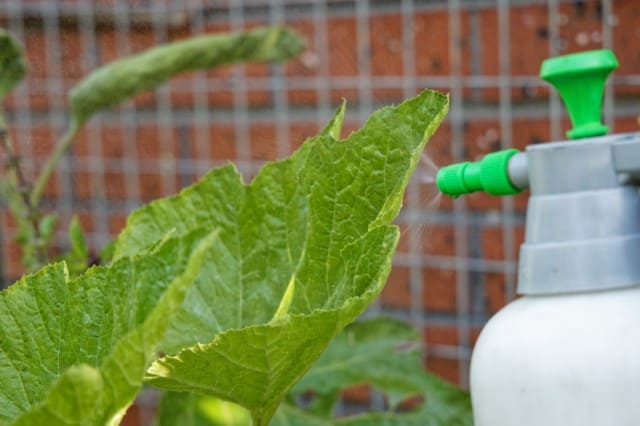
Maintain constant agitation in your sprayer throughout application. Oil and water naturally separate, and applying unmixed solution can result in either ineffective watery spray or concentrated oil that burns plants.
Modern hose-end sprayers with built-in agitation work well for small applications, while pump sprayers with manual agitation serve most home garden needs.
Related posts:
- How to Use Insecticidal Soap for Organic Pest Control
- How to Use Diatomaceous Earth in Your Garden for Natural Pest Control
Critical Safety Precautions
While horticultural oils are generally safe, proper protective equipment prevents potential health issues. Wear long sleeves, long pants, chemical-resistant gloves, and safety glasses during mixing and application. Use respiratory protection if applying in enclosed spaces or if you’re sensitive to oil vapors.
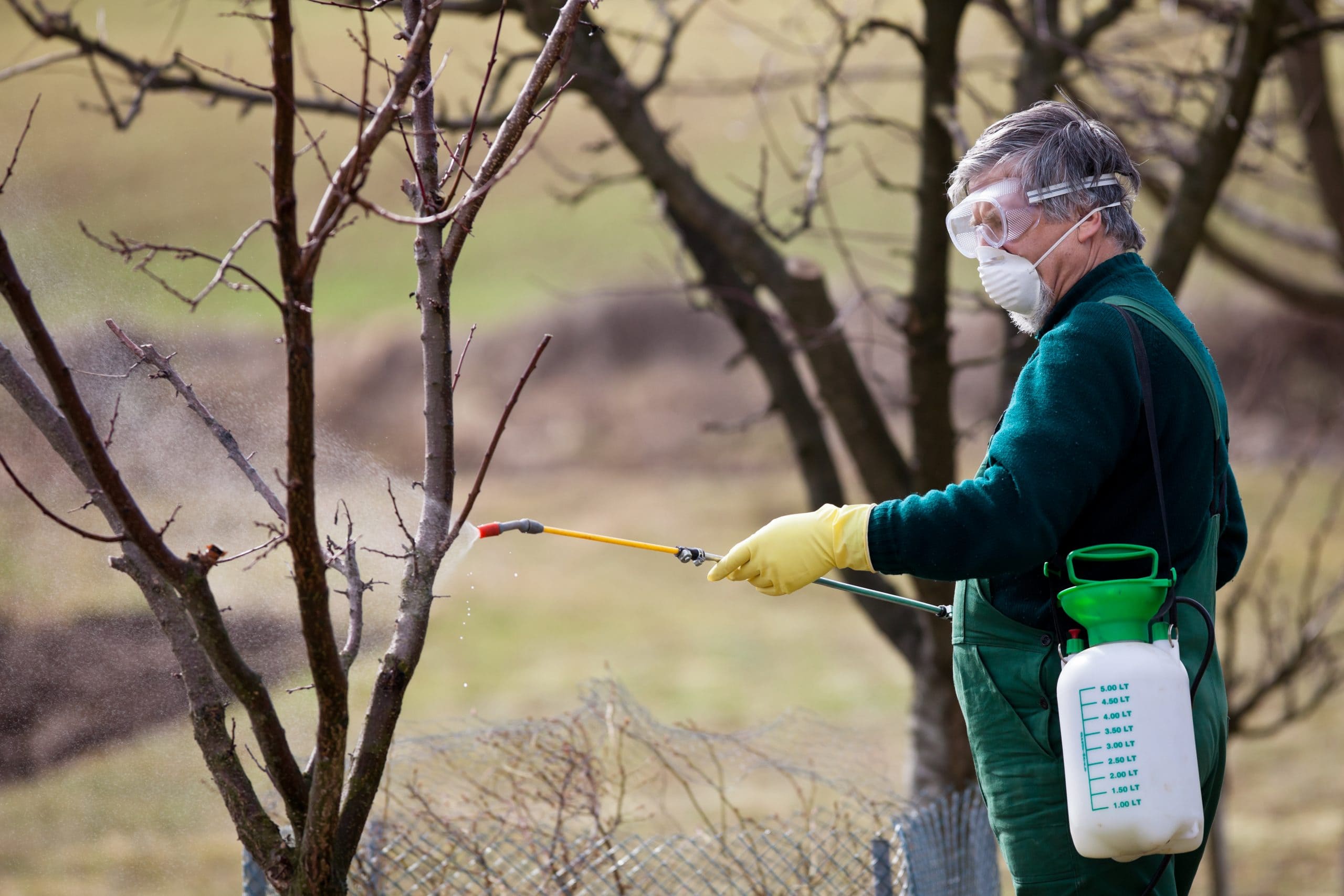
Keep oils away from heat sources and open flames—they are flammable. Store containers in cool, dry locations away from children and pets, and always read product labels for specific handling instructions.
Understanding Plant Sensitivities and Damage Recognition
Not all plants tolerate oil applications equally, and recognizing both sensitive species and damage symptoms helps prevent costly mistakes.
High-Risk Plants
Exercise extreme caution or avoid oil applications entirely on blue-colored conifers (the oil permanently removes waxy bloom), Japanese and red maples, hickories and black walnut, most juniper and cedar varieties, smoke tree, certain azalea cultivars, and redbud.
Eastern white pine, Norway spruce, and Douglas fir also show sensitivity, particularly to dormant applications.
Recognizing Phytotoxicity
Plant damage from oils typically appears as chlorosis (yellowing) that progresses to brown stippling, water-soaked appearance, and eventual leaf drop. Symptoms usually develop within 24-48 hours of application and are most severe on young, tender growth.
If you notice early damage symptoms, immediately wash affected plants with clean water to remove any remaining oil residue. Most plants recover from mild oil damage, though it may take several weeks for new healthy growth to emerge.
👉 Here Are 13 Fiddle Leaf Fig Problems and How to Solve Them With Easy Fixes
Prevention Strategies
Test any new oil product on a small, inconspicuous area of each plant species before broad application. Wait 48-72 hours to assess for damage before treating the entire plant. This simple precaution prevents widespread damage and helps you identify sensitive cultivars in your specific growing conditions.
Environmental Conditions and Contraindications
Understanding when NOT to apply horticultural oils is just as important as knowing when to use them. Environmental conditions play a crucial role in both effectiveness and plant safety.
Temperature Extremes
Never apply oils when temperatures are below 40°F—the emulsion breaks down and coverage becomes uneven. At the other extreme, avoid applications when temperatures exceed 90°F or are expected to reach that level within 24 hours of treatment. The combination of oil and heat stress can severely damage or kill plants.
High humidity (over 90% for extended periods) slows oil evaporation and increases phytotoxicity risk. Conversely, very low humidity accelerates evaporation and may reduce effectiveness against target pests.
Plant Stress Conditions
Drought-stressed plants are particularly vulnerable to oil damage. Ensure plants are well-watered and not showing wilting symptoms before application. Similarly, avoid treating newly transplanted plants until they’ve established (typically 4-6 weeks).
Fall applications generally should be avoided because plants haven’t achieved full dormancy and winter hardiness. Oil treatments during this vulnerable period can increase susceptibility to winter damage and dieback.
Chemical Incompatibilities
The most critical incompatibility involves sulfur-containing products. Never apply horticultural oils within 30 days of sulfur treatments—the combination creates phytotoxic compounds that can severely damage or kill plants. This includes elemental sulfur, lime sulfur, and fungicides containing sulfur compounds.
Other incompatibilities include certain copper-based fungicides and some insecticides. Always check product labels for specific mixing restrictions and conduct small-scale compatibility tests when combining products.
Storage, Shelf Life, and Cost Considerations
Proper storage extends product life and maintains effectiveness while understanding cost factors helps with purchasing decisions.
Storage Requirements
Store horticultural oil concentrates in cool, dry locations away from temperature extremes. Most products maintain effectiveness for 2-3 years when properly stored, though plant-based oils may have shorter shelf lives. Always check for proper emulsion before use—mix a small test batch and ensure it turns milky white when combined with water.
Homemade oil concentrates should be used within 3 months and stored in clearly labeled containers away from food items and household products.
Cost-Effectiveness Analysis
Horticultural oils offer excellent value compared to synthetic pesticides. A gallon of concentrate typically costs $20-40 and makes 100-400 gallons of spray solution depending on application rates. This translates to pennies per gallon of finished spray—significantly less expensive than most commercial insecticides.
The prevention aspect adds even more value. One well-timed dormant oil application costing $5-10 in materials can prevent pest problems that might otherwise require multiple expensive treatments throughout the growing season.
Integration with Comprehensive Pest Management
Horticultural oils work best as part of a comprehensive integrated pest management (IPM) strategy rather than as standalone treatments.
Monitoring and Early Detection
Establish a regular monitoring schedule, inspecting plants weekly during the growing season and monthly during dormancy. Focus on common pest hiding spots like leaf undersides, branch crotches, and new growth. Early detection allows you to address problems with lower concentration oils and fewer applications.
Beneficial Insect Conservation
Time oil applications to minimize impact on beneficial insects. Apply during early morning or late evening when pollinators are less active, and avoid treating plants during peak bloom periods when beneficial insects are most active. The rapid breakdown of oils means beneficial insects can safely reenter treated areas within 24-48 hours.
👉 Here’s How to Create a Pollinator-Friendly Garden: A Step-by-Step Guide
Resistance Management
Since oils work through physical rather than chemical mechanisms, pests cannot develop true resistance. However, populations with thicker waxy coatings or other protective adaptations may become more common with repeated use. Rotate oil applications with other control methods to maintain long-term effectiveness.
Making Your Own: DIY Horticultural Oil
For gardeners who prefer complete control over ingredients or want to reduce costs, homemade horticultural oil offers an effective alternative to commercial products.
Basic White Oil Recipe
Combine 2 cups of vegetable oil (sunflower, soybean, or canola work well) with 1/2 cup of pure liquid castile soap in a jar. Shake vigorously until the mixture turns milky white—this indicates proper emulsification. Store the concentrate in a cool, dry place for up to 3 months, clearly labeled and away from children and pets.
To use, mix 2 tablespoons of concentrate per gallon of water, shaking well before and during application. This recipe creates enough concentrate for about 25 gallons of spray solution—sufficient for most home gardens for an entire season.
Quality Considerations
Use the highest quality ingredients available. Cold-pressed vegetable oils tend to work better than heavily processed versions, and pure castile soap provides better emulsification than detergents. Avoid oils with added preservatives or fragrances that might harm plants.
Test homemade formulations on a small area before broad application, as effectiveness and plant safety can vary depending on ingredient sources and mixing ratios.
Regional and Climate Considerations
Your local climate and growing zone significantly impact both timing and effectiveness of horticultural oil applications.
Cold Climate Applications
In zones 3-6, the dormant application window may extend from late February through early April, depending on spring weather patterns. Extended cold periods allow for more flexible timing, but watch for early warm spells that break dormancy prematurely.
Hot Climate Challenges
Gardeners in zones 8-10 face narrower application windows during summer months. Focus on early morning applications and consider switching to preventive dormant treatments rather than struggling with summer applications during extreme heat.
👉 Learn about Desert Gardening for Beginners: Growing Food & Plants in Extreme Heat
Humidity Considerations
High-humidity regions require extra attention to application timing and plant selection. Allow longer drying periods and avoid applications before extended humid periods. Consider using lower concentrations and more frequent applications rather than high-dose treatments.
Frequently Asked Questions
- Can I use cooking oil from my kitchen?
Regular cooking oils lack the proper refinement and emulsifiers needed for plant safety and pest control effectiveness. They may actually harm plants or provide inadequate pest control. Always use products specifically formulated for horticultural use.
- How often should I apply horticultural oil?
For active infestations, reapply every 7-14 days as needed, but limit total applications to 3-4 times per growing season to avoid plant stress. Monitor pest levels between applications to determine if retreatment is necessary.
- What’s the shelf life of mixed spray solution?
Use mixed solutions within 24 hours for best results. The emulsion can break down over time, reducing effectiveness and potentially causing plant damage.
- Can I apply oils to edible crops?
Most horticultural oils are safe for vegetables and fruits. Plant-based oils typically have no harvest restrictions, while petroleum-based products may require waiting 1 day before harvest. Always check specific product labels for any restrictions.
- Why do some oils cost more than others?
Price differences reflect refinement levels, source materials, and included additives. Higher-priced products often have better plant safety profiles and may include additional pest control compounds or improved emulsifiers.
- Will oil applications affect fruit production?
When used properly, oils shouldn’t significantly impact fruit production. However, excessive applications or poor timing (such as during pollination) can reduce fruit set. Follow label recommendations for timing and frequency.
The Bottom Line: Your Path to Natural Pest Control
Horticultural oils represent one of gardening’s most effective and environmentally responsible pest control tools. They offer the rare combination of proven effectiveness, environmental safety, and broad-spectrum control without the drawbacks of synthetic pesticides.
Success comes from understanding your specific situation—knowing which oils work best for your target pests, timing applications for maximum effectiveness while avoiding plant damage, and integrating oil treatments into a comprehensive pest management strategy.
Start conservatively with small test areas, pay attention to weather conditions, and maintain detailed records of what works in your specific garden environment.
The transition from chemical-dependent pest control to oil-based management requires patience and observation skills, but the rewards—healthier plants, safer gardens, and thriving beneficial insect populations—make the learning curve worthwhile.
Your garden becomes a more balanced ecosystem where natural controls help maintain pest populations at manageable levels without the environmental costs of synthetic alternatives.
Remember that horticultural oils are tools, not magic bullets. They work best when combined with good cultural practices, regular monitoring, and an understanding of the complex relationships between plants, pests, and beneficial organisms in your garden ecosystem.
With proper knowledge and application, these time-tested products can help you maintain a healthy, productive garden while protecting the environment for future generations.
